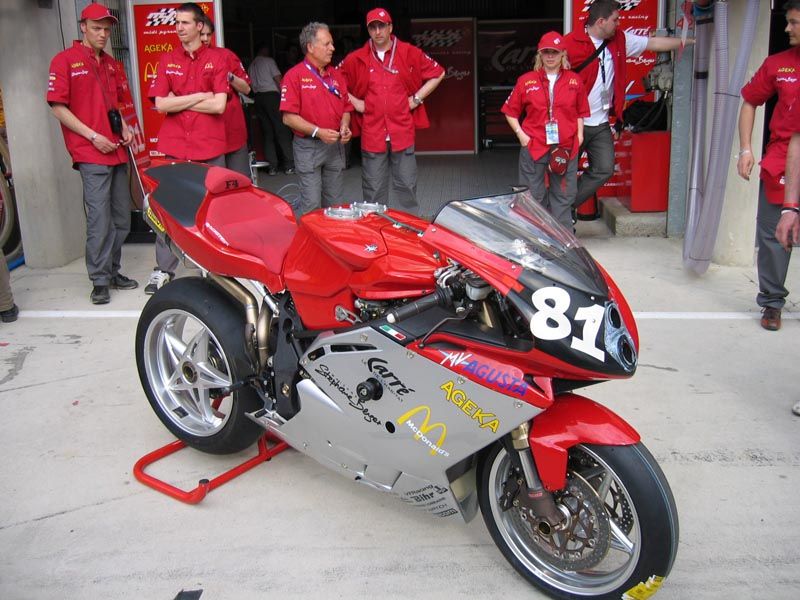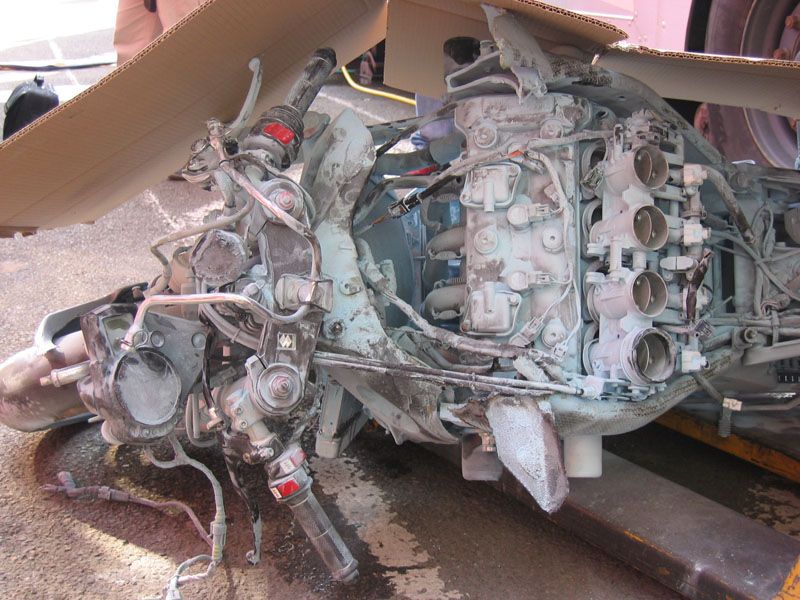Part Eight
 In an effort to stay awake between pit stops I'm playing a game. By listening to the sounds I am attempting to identify not only how many bikes are passing by on the track, but how many of each brand is blitzing past at nearly 200 mph. The bikes from Suzuki, Yamaha, Kawasaki and Honda sound similar, but each can be picked out from the nuances in the exhaust note before plunging back into the darkness.
In an effort to stay awake between pit stops I'm playing a game. By listening to the sounds I am attempting to identify not only how many bikes are passing by on the track, but how many of each brand is blitzing past at nearly 200 mph. The bikes from Suzuki, Yamaha, Kawasaki and Honda sound similar, but each can be picked out from the nuances in the exhaust note before plunging back into the darkness. The Honda tends to sounds deeper, the Yamaha howls a little and the Suzuki simply sends cold chills down your spine. Even more distinct are the beautiful howls of the MV Agusta and Aprilia RSV Mille, the latter a twin cylinder that thumps and growls as it accelerates from the tight final chicane at a lower RPM than the in-line fours. Many on the team hold this sound, this aural assault, as the most pure of racing sounds. Unlike the shrieking of the four cylinder superbikes, the twin has an elegance and ferocity to it that conjures visions of a WW2 fighter. The impression comes complete with a leather helmeted pilot, smoking a cigarette, flying three feet off the deck in place of the RSV Mille being ridden to its limit by a rider cloaked from head to toe in leather, carbon fiber and titanium.
The Honda tends to sounds deeper, the Yamaha howls a little and the Suzuki simply sends cold chills down your spine. Even more distinct are the beautiful howls of the MV Agusta and Aprilia RSV Mille, the latter a twin cylinder that thumps and growls as it accelerates from the tight final chicane at a lower RPM than the in-line fours. Many on the team hold this sound, this aural assault, as the most pure of racing sounds. Unlike the shrieking of the four cylinder superbikes, the twin has an elegance and ferocity to it that conjures visions of a WW2 fighter. The impression comes complete with a leather helmeted pilot, smoking a cigarette, flying three feet off the deck in place of the RSV Mille being ridden to its limit by a rider cloaked from head to toe in leather, carbon fiber and titanium. Overlooking the back straight from the main timing tower and spectator grandstand reveals the primary differences between the top teams and the also-rans. Standing roughly five stories above the track, the back stretch entry in the [name] Curves can be seen easily, as can the incredibly fast approach taken by the top riders. A banked entry for the first right hand turn allows riders to carry speed, trailbraking all the way into the apex before flicking the bike left for another long sweeper.
Overlooking the back straight from the main timing tower and spectator grandstand reveals the primary differences between the top teams and the also-rans. Standing roughly five stories above the track, the back stretch entry in the [name] Curves can be seen easily, as can the incredibly fast approach taken by the top riders. A banked entry for the first right hand turn allows riders to carry speed, trailbraking all the way into the apex before flicking the bike left for another long sweeper.The fastest bikes approach this corner at unimaginable speeds, carrying their momentum well into the corner. Passes so late they occur at the apex, and the cherry red glow of brake disks is proof of their monumental efforts to run race laps only tenths off that of their qualification times. Most of these teams will also pay the price for attempting to run this kind of pace for 24 hours.
 Highsides slowed or destroyed SERT, GMT94 and Kawasaki France's efforts, while several other teams saw their bikes reduced to scrap wreckage in the fight to keep up. Amazingly, some teams were able to return to the action and still finish in the top 10 after monumental repairs were expedited by their dedicated crews. Another, having been vaulted into the turn one gravel trap at 200 mph, was understandably beyond repair.
Highsides slowed or destroyed SERT, GMT94 and Kawasaki France's efforts, while several other teams saw their bikes reduced to scrap wreckage in the fight to keep up. Amazingly, some teams were able to return to the action and still finish in the top 10 after monumental repairs were expedited by their dedicated crews. Another, having been vaulted into the turn one gravel trap at 200 mph, was understandably beyond repair.In the darkness, even with the overhead lights, it is difficult to distinguish one bike from the next. Ghoulish howls are accompanied by the eerie glow of yellow, green, blue and white headlights twisting and tipping quickly from one side to the next; the scene is mesmerizing and I find myself staring quietly in the cool darkness.
 I spend the entire stint, a full hour, atop the grandstand watching this amazing display of commitment, concentration and dedication. With the sounds of the race echoing all around me I find myself beginning to relax atop the tower. I could stand here for hours, and would return often, if I didn’t need to be back in the pit box preparing for our next stop. My ever present duties operating the rear stand and making tire changes only adds to the experience, but I wouldn’t mind being here a little while longer. Lap after lap and hour after hour they push, testing the mechanical limitations of tires, engines, muscles and minds.
I spend the entire stint, a full hour, atop the grandstand watching this amazing display of commitment, concentration and dedication. With the sounds of the race echoing all around me I find myself beginning to relax atop the tower. I could stand here for hours, and would return often, if I didn’t need to be back in the pit box preparing for our next stop. My ever present duties operating the rear stand and making tire changes only adds to the experience, but I wouldn’t mind being here a little while longer. Lap after lap and hour after hour they push, testing the mechanical limitations of tires, engines, muscles and minds.Adding to the spectacle is a veil of dark smoke, the densest portion hanging just meters above the track, in some cases engulfing it. The source of this thick, acrid smoke can be seen just beyond the riders. Acting as a backdrop to the lightshow occurring on the track is a Mad Max like festival highlighted by several massive bonfires. As I had learned the previous evening, three days worth of alcohol, sleepless nights and partying make for unusual spectator activity; the norm here at Le Mans.
Continue >>

0 Comments:
Post a Comment
<< Home